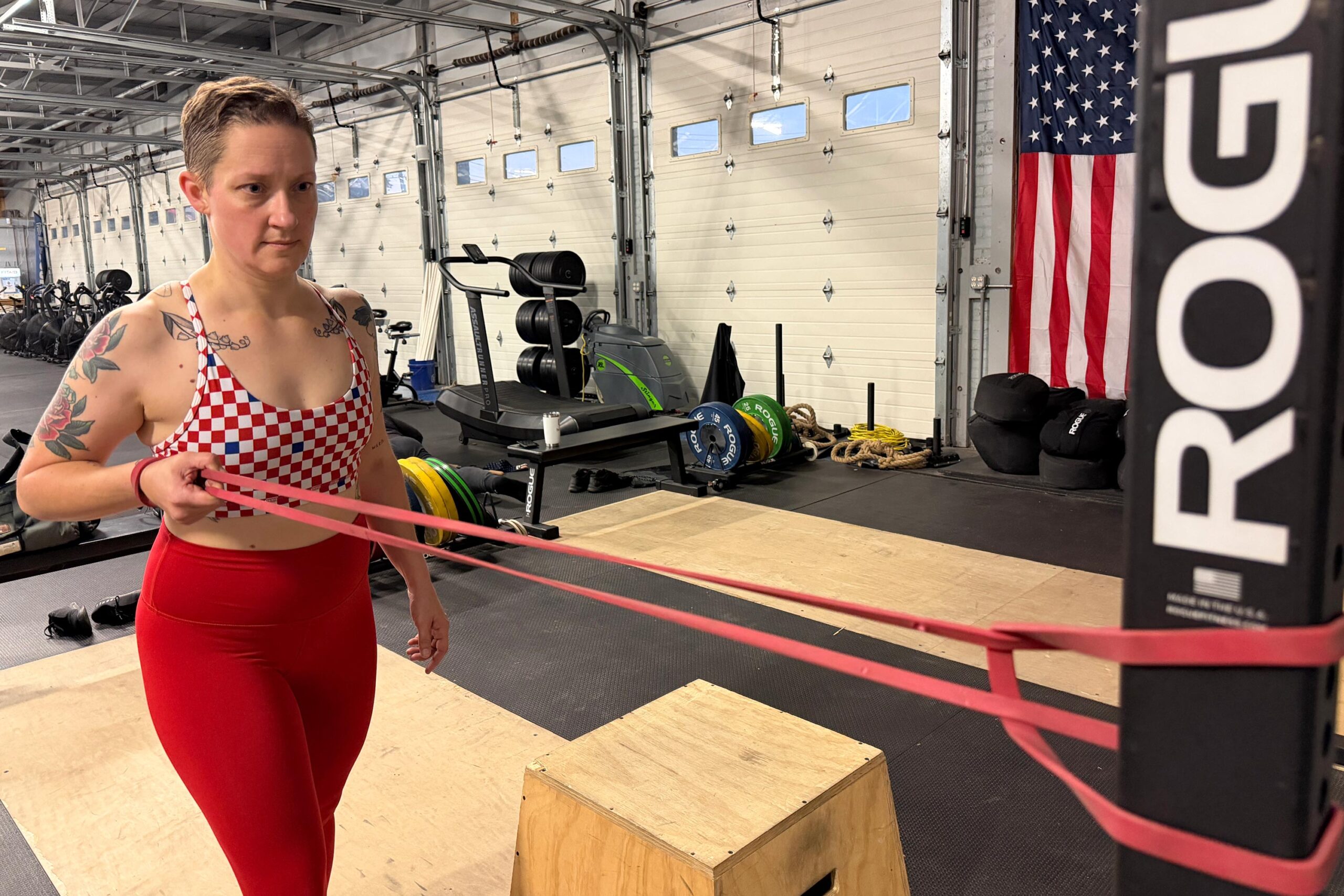Health
Four Effective Exercises to Combat Tech Neck Pain

As the use of personal devices continues to rise, many individuals are experiencing discomfort associated with “tech neck,” a condition characterized by forward head posture and neck pain. This issue arises when people frequently tilt their heads forward while using smartphones, tablets, or laptops. According to physical therapist Patrick Suarez from Albany, New York, the inclination to stretch the neck for relief can often worsen the problem.
Tech neck results from the habitual positioning of the head, which shifts the neck out of alignment and places strain on the muscles connecting the neck and upper back. Instead of stretching, Suarez emphasizes the importance of strengthening these muscles to restore proper posture and alleviate pain.
Understanding the Problem of Tech Neck
Tech neck is not solely a consequence of screen time. Regular activities, such as driving, can contribute to poor posture as well. Suarez advises that when in a vehicle, individuals should ensure their backs are fully against the seat, with shoulders back and the head resting on the headrest. Making adjustments to one’s position rather than the mirrors can encourage better alignment.
He acknowledges that maintaining an ideal posture for extended periods is unrealistic for many. Instead, small, consistent efforts combined with targeted exercises can lead to improvement over time. “Small increments. We work on it, we work on it, we get better,” Suarez states.
Four Exercises to Strengthen the Neck
To combat the effects of tech neck, Suarez recommends four specific exercises aimed at reinforcing the muscles that support proper head alignment. These exercises focus on enhancing mobility and strength in the upper back, which is crucial for maintaining a healthy posture.
1. **Wall Angels**
This exercise promotes better posture and shoulder mobility. Stand with your back against a wall, ensuring your low back, shoulders, and head are in contact with it. Keep your core engaged as you position your arms at a 90-degree angle, forearms against the wall. Slowly raise your arms overhead while maintaining contact with the wall, then return to the starting position.
2. **Thoracic Spine Wall Rotation**
This movement increases rotational mobility in the upper back. Begin in a half-kneeling position next to a wall, with your right thigh against it. Place your fingertips behind your ears and rotate your torso to the left until both elbows touch the wall. Reverse the motion and repeat on the opposite side.
3. **Row Variations**
Strengthening the upper back through rowing exercises enhances shoulder alignment. For a single-arm row, anchor an exercise band at chest height. Stand facing the anchor with a staggered stance and pull the band towards you, engaging your back muscles. The high-to-low row variation involves pulling the band from an overhead position down to your ribs, again focusing on squeezing the muscles in your back.
4. **Prone I’s, T’s, and Y’s**
These exercises target the muscles around the shoulder blades, promoting upper back extension. While lying face down on a stability ball, raise your arms to form a “Y,” then a “T,” and finally extend your arms backward to form an “I.” Each movement should be performed with control and focus on squeezing the shoulder blades together.
By incorporating these exercises into a daily routine, individuals can counteract the effects of tech neck and improve their overall posture. Strengthening the neck and upper back not only reduces pain but also enhances mobility, leading to a healthier lifestyle.
As technology becomes increasingly integrated into daily life, awareness and proactive measures are essential. With consistent effort and the right exercises, relief from tech neck is within reach.
-

 Health4 days ago
Health4 days agoRare Brain Condition Discovered More Common in New Mexico
-

 Politics5 days ago
Politics5 days agoPrince Andrew Steps Back from Royal Duties Following Epstein Memoir
-

 Health5 days ago
Health5 days agoRemembering Mary Ingleby: A Life of Love, Teaching, and Music
-

 Sports5 days ago
Sports5 days agoMLS Decision Day 2025: Playoff Spots on the Line as Teams Clash
-

 Science5 days ago
Science5 days agoIdaho State University Launches Haunted Science Laboratory on Oct. 25
-

 World5 days ago
World5 days agoYoung Driver Dies in Collision with Box Truck in El Cajon
-

 Lifestyle5 days ago
Lifestyle5 days agoKent Hamilton Named Southeastern Farmer of the Year at Expo
-

 Business5 days ago
Business5 days agoFirst National Bank of Groton’s Quiet Period Ends October 21
-

 Entertainment5 days ago
Entertainment5 days agoTrump Commutes George Santos’ Sentence, Sparks Controversy
-

 Politics5 days ago
Politics5 days agoNavy Veteran Max Quattromani Launches Campaign for Assessor Seat
-

 Sports5 days ago
Sports5 days agoSaquon Barkley Reacts to James Franklin’s Dismissal from Penn State
-

 Health3 days ago
Health3 days agoScientists Warn: Human Brain Struggles to Function After Midnight









